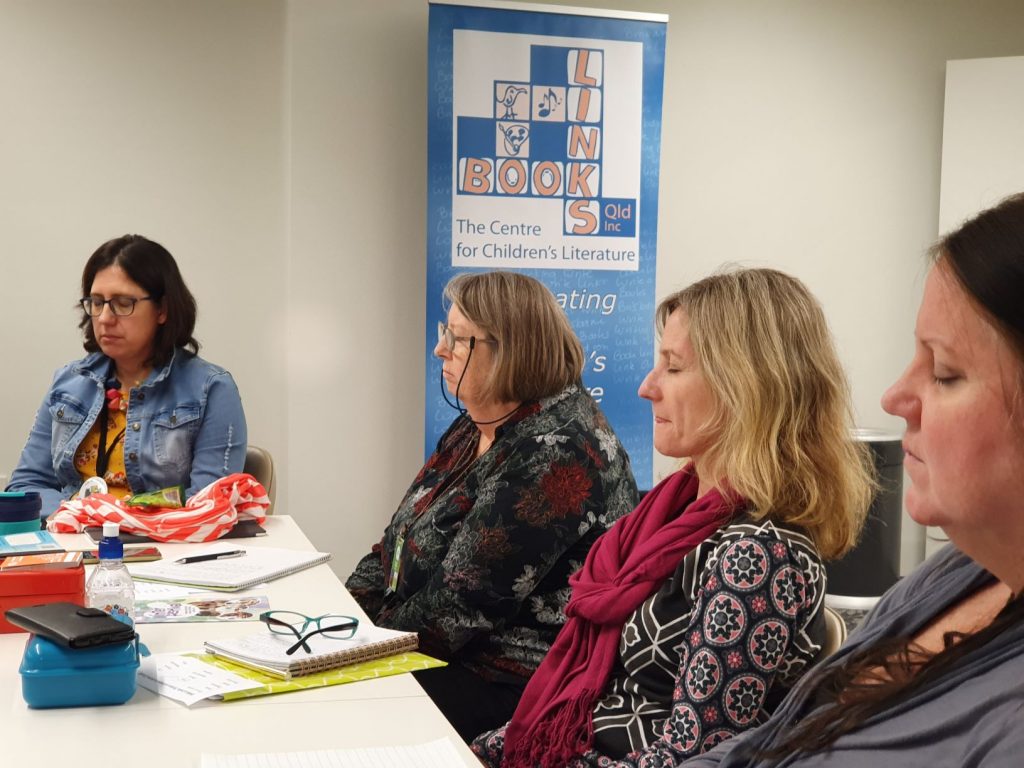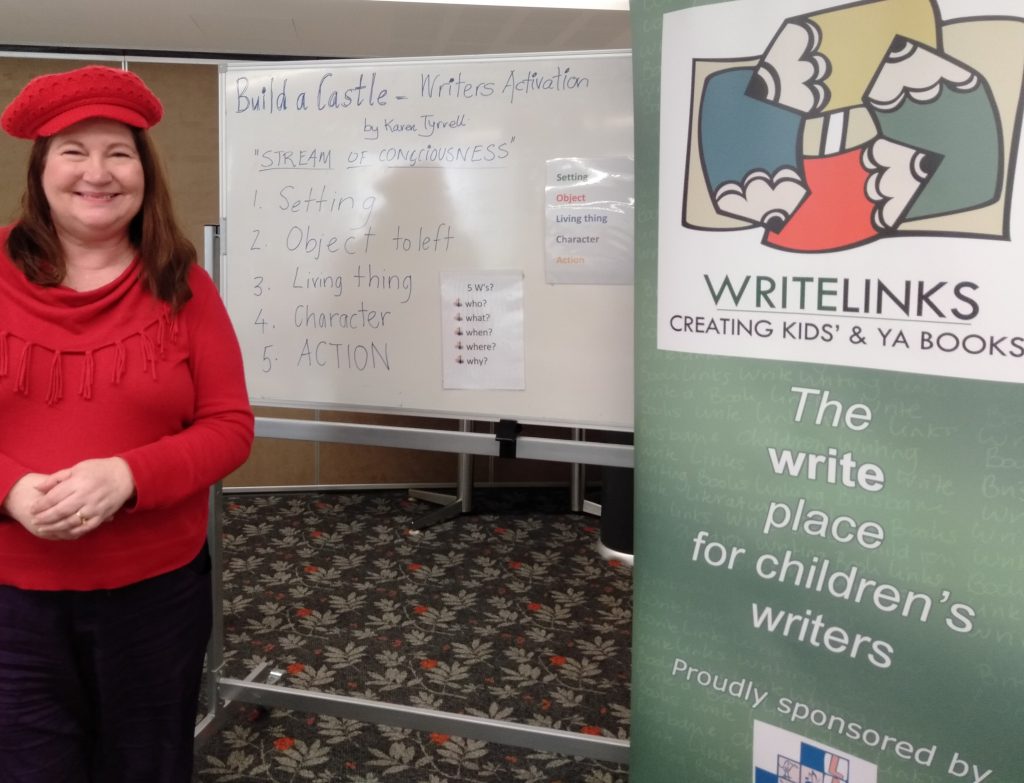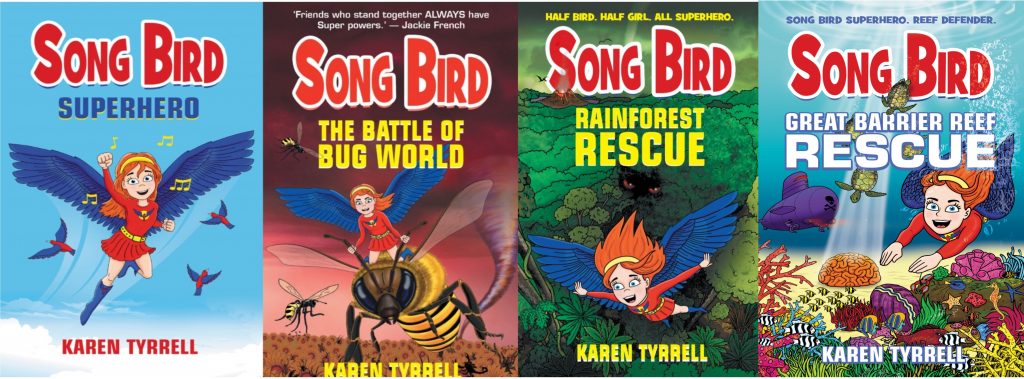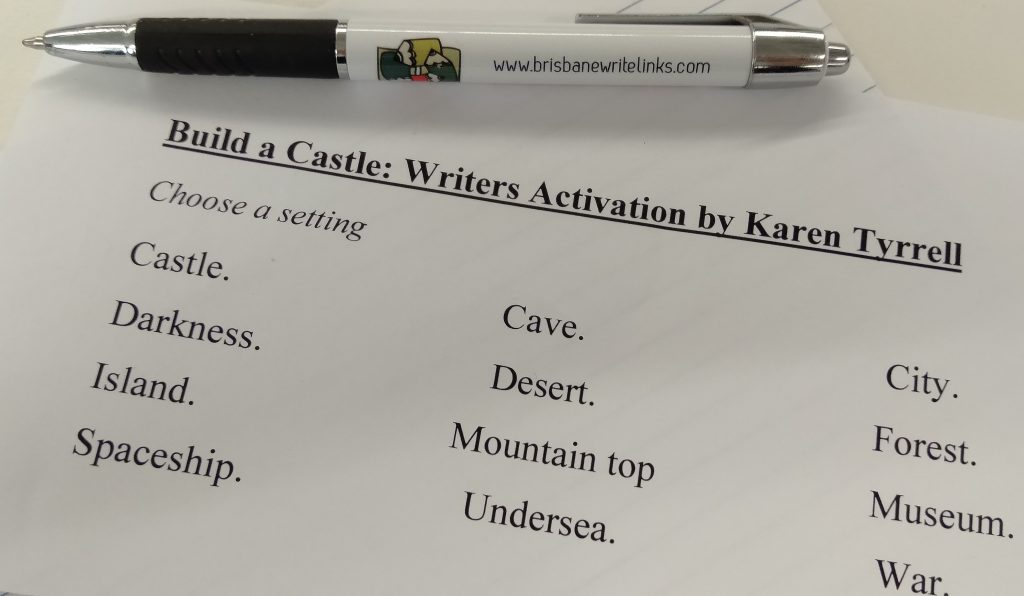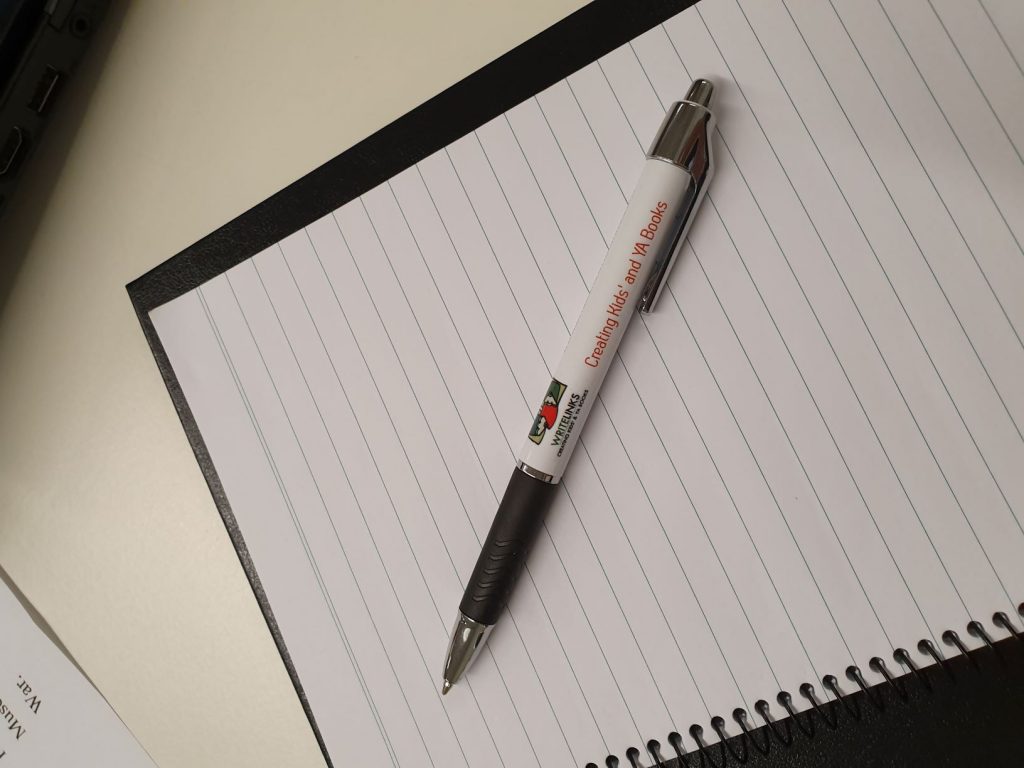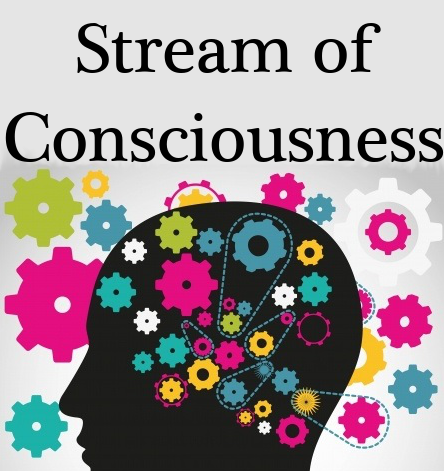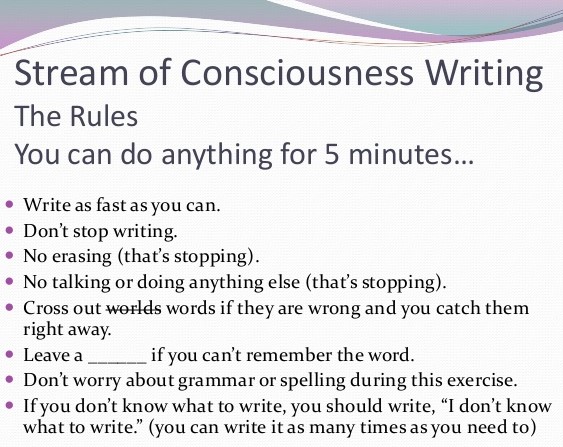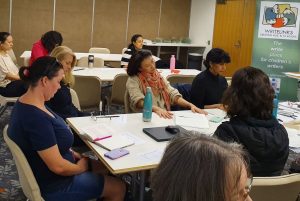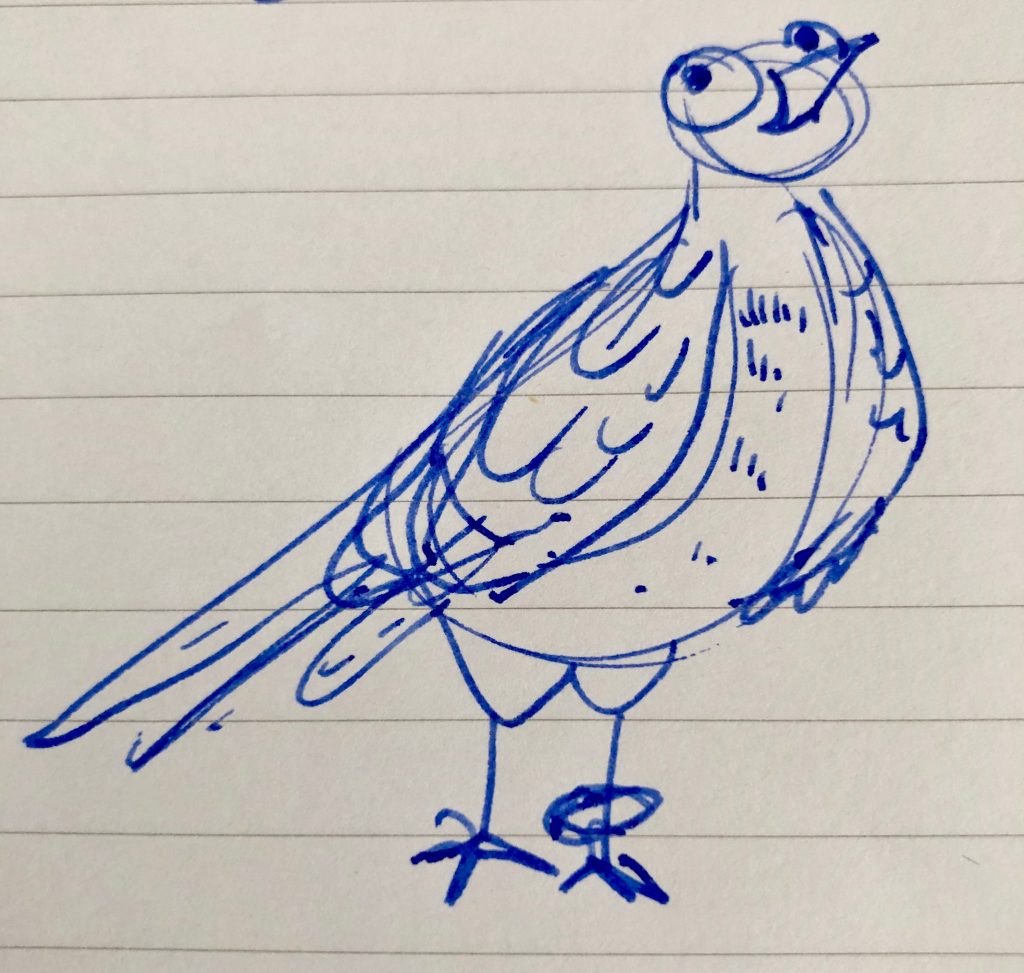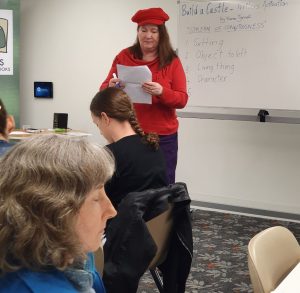Stream of Consciousness Writing
On Saturday I (Karen Tyrrell) presented a stream of consciousness writing workshop for my Brisbane writing buddies at Write Links (a sub group of Book Links).
Who inspired me to write via stream of consciousness?
In February, Karen Foxlee spoke at Write Links, sharing how stream of consciousness helped her to create New York seller, Lenny’s Book of Everything.
She expressed the heart of Lenny, by connecting with her memories, hopes, fears and dreams.
Stream of consciousness helps me to write my quirky junior fiction novels, Song Bird Superhero series and my WIP.
Tapping into my character’s inner monologue, helps to create strong emotions, thoughts and dialogue, spliced with humour.
What’s stream of consciousness writing?
Stream of consciousness writing happens when you close your eyes, envisage your setting, character and story, tapping into the subconscious.
You pen-write quickly without pausing, without editing.
What’s Write Links?
Write Links is a face to face group of Brisbane children’s writers of picture books, junior novels and YA. Each month, Write Links members enjoy writer’s activation sessions co-ordinated by Yvonne Mes.
This month, I presented my workshop Build a Castle.
How do I present Build A Castle workshop?
I read out short guided writing instructions for participants to visualize and then write.
First, I ask writers to choose a setting from a list of 12.
How did I present the stream of consciousness writing workshop?
STEP 1 I request writers to close their eyes and place their hands flat on the table or on their knees. ‘Now, picture yourself, or a character/ hero/ villain standing in for you, in the setting you have chosen. Concentrate on YOUR surroundings, but don’t try to imagine anything. Just let the environment fade in around you.’
When you can SEE your environment, open your eyes.
STEP 2 ‘Without pausing to think, write exactly what you saw. Aim for 4 sentences or more.
We continued, going back into the same environment, eyes closed. Next, we visualize a hidden object coming into view.
‘When you SEE it, open your eyes and write down what it looks like.’
STEP 3 Eyes closed, step back into the environment, this time a living thing comes into view. Write down what you see.
STEP 4 Behind you is a reflective surface (water, glass, mirror, metal). Look at “YOUR” Reflection.
Pause to consider the mood of the environment. Happy? Fearful? Peaceful? Uneasy?
When you see how “you” LOOK, and know how “you” FEEL, open your eyes.
Without pause for thought, write down what you saw.
STEP 5 This time, “SEE” it as a movie set. “You” are there, so is the inanimate object AND a living creature. A voice calls “ACTION!” The scene comes to life. See what happens.
Open your eyes, and write down the ACTION you just witnessed.
STEP 6: I invited them to expand their writing by asking themselves the 5 W’s questions. I suggested they read, edit and expand their writing to create a story or a book.
What did my Write Links buddies write?
Setting
Trees reached for the sky, sunlight streaming through, scattered by leaves. Lacey fern fronds gently brushed my face as I scurried around the forest floor. The sweet smell of decaying undergrowth filled the air. Moisture settled and droplets formed, splashing into the stream. — Sandy Driessens writer
Special Object
The broken carcass of a ship lays resting against the rocks to the left. Half in the water and half out. A gaping hole in the side shows the reason for this wreckage. Paint flecks of green and white outline the recent hole and the sail lays, smashed and scattered, on the deck.
Sophia Evans writer
Living Thing.
A pigeon walks up from behind the puppet. It looks happy and this-is-my-domain cocky.
It’s a common sort of street pigeon, with a ring around one of its paws and missing a toe.
Unlike the other pigeons it seems to have a sense of purpose, not pecking around looking for scraps, instead it strides confidently. – Yvonne Mes Writer & illustrator
Main Character
My reflection in the castle’s window shows a pointed face accentuated by a long tapering beard. My hair falls limp and straight past my ears and neck to my shoulders. It blows in the breeze, once dark but now peppered with grey. Veins stand out on my face. Would people trust me?
Not with the thick black snake lying across my arms and shoulders. I find a bush along the castle wall, and direct it to hide — Tyrion Perkins writer
Testimonial
‘I found your exercise so helpful that it gave me the idea to develop into a short story.’
Inda Ahmad Zabri writer
How does stream of consciousness develop your writing?
- Taps into your imagination through visualization
- Creates flow and confidence in your writing
- Connects you to your character’s feelings, thoughts, dialogue and action
- Activates writing a new story or novel
- Present stream of consciousness writing to children to develop their imagination.
Who is Blog writer- Karen Tyrrell Author?
Karen Tyrrell is an award-winning author of twelve empowering books to help kids live strong. She presents writing workshops for schools, libraries, festivals and conferences. You can book Karen via agents Speakers Ink, Greenleaf Press or Creative Speakers Net.
How has stream of consciousness helped your writing?
Please comment below, LIKE and share on your networks. 
